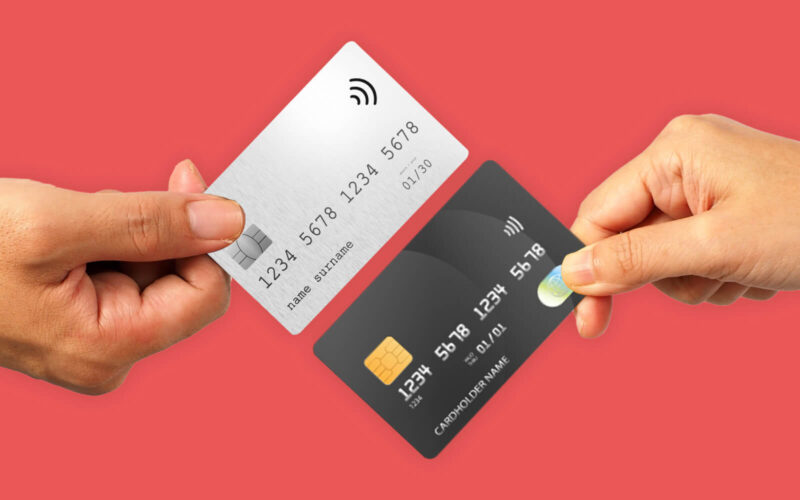While plastic credit cards are widely used as convenient payment methods since decades, metal credit cards have also gained popularity in the recent times. This blog shows a detailed comparison of their key characteristics in terms of appearance and design, durability and longevity, and weight and feel. Both these have their own set of benefits and drawbacks. This blog gives you an insight into what could be the perfect choice for you – a metal or a plastic card. Let us dive in to know more.
What are Metal Credit Cards?
Metal credit cards are unique payment cards that are fancier and more luxurious than regular plastic credit cards. Crafted from premium materials like stainless steel or metal alloys, they stand out from traditional plastic cards in appearance, durability and functionality. Equipped with EMV chips and contactless payment technology, they provide added protection against fraudulent activities. Metal cards offer additional perks like higher rewards, lower interest rates and exclusive discounts. However, metal credit cards come with a higher annual fee, providing a luxurious and high-performing option for those willing to invest.
What are Plastic Credit Cards?
Plastic cards are common payment cards widely used for performing various transactions. Made from durable plastic materials like PVC (Polyvinyl Chloride), these cards are easily accepted at stores, restaurants and other businesses as a convenient payment method. They serve multiple purposes, including making in-person purchases, withdrawing cash from ATMs and conducting online transactions. They are easy to carry and provide a secure payment method.
Difference Between Plastic and Metal Credit Cards
Here are several noteworthy differences between plastic and metal credit cards on the basis of various notable factors-
Appearance and Design
- Metal Credit Cards: These cards are often associated with luxury and prestige. They exude elegance and sophistication, making a solid impression when used for payment. Typically made from stainless steel or a combination of metal alloys, these cards feature a sleek and glossy finish that adds a touch of exclusivity. The metallic surface of the metal credit cards may be embossed with intricate patterns, logos or cardholder’s details, enhancing their aesthetic appeal.
- Plastic Credit Cards: Conversely, plastic credit cards are more common and widely issued by banks and financial institutions. They are made from durable PVC or other synthetic materials. Plastic cards offer flexibility in terms of design and customisation. They can be printed with vibrant colours, detailed graphics and personalised information.
Durability and Longevity
- Metal Credit Cards: When it comes to durability, metal credit cards have an added advantage. Thanks to their solid construction, these cards are highly resistant to physical damage, such as bending or breaking. The robust metal material ensures that it can withstand everyday use and remain intact for an extended period. This durability contributes to its appeal as a long-lasting credit card.
- Plastic Credit Cards: Plastic credit cards, while not as resilient as their metal counterparts, still offer adequate durability. They are designed to withstand typical wear and tear, and thus, can be swiped or inserted into card readers many times without getting damaged. However, plastic cards may be more prone to scratches and fading. Some users may opt for card protectors or sleeves to preserve the card’s condition and prevent potential damage.
Weight and Feel
- Metal credit cards: One of the most noticeable distinctions between metal and plastic credit cards is their weight. Metal cards are significantly heavier than plastic cards. The weight of a metal card contributes to its premium feel and reinforces the sense of being special or unique. Holding a metal credit card can provide a sense of luxury and distinction to its user(s).
- Plastic credit cards: In contrast, plastic credit cards are lightweight and easy to handle. The lightweight nature of plastic makes it easy to carry and handle, providing convenience to users during transactions. The flexibility of a plastic credit card helps it to absorb impact and reduces the chances of fracturing or cracking during normal use. This durability ensures that the card remains functional for an extended period.
Cardholder Benefits
- Metal credit cards: For customers, who make significant expenditures, these cards can offer remarkable rewards. These perks may include exclusive reward programs, higher cashback rates, complimentary airport lounge access, concierge services and dedicated customer support. The luxurious nature of metal cards is often accompanied by enhanced privileges catering to affluent cardholders’ lifestyles and preferences.
- Plastic credit cards: These offer various benefits, catering to a broader customer base. Depending on the card issuer and type, plastic cards can provide rewards such as cashback, travel miles, discounts on purchases, access to merchant offers and extended warranty protection. Additionally, plastic cards are generally more widely accepted, making them a convenient payment option in various locations.
Considerations and Drawbacks
- Metal credit cards: While metal credit cards offer many advantages, it’s essential to consider a few potential drawbacks. One consideration is the higher annual fees often associated with these premium cards. Furthermore, the metallic construction can sometimes interfere with contactless payment functionality, in instances when swiping is required. The weight of metal cards may also be a factor for individuals who prefer a lighter wallet or have specific portability needs.
- Plastic credit cards: Despite widespread usage and benefits, plastic credit cards may also have drawbacks. The plastic material is more susceptible to damage from bending or exposure to extreme heat. Additionally, plastic cards may lack the perceived exclusivity and premium status associated with metal cards, which might be important for people looking for fancier cards.
Also Read: What are the Various Types of Credit Card?
Conclusion
Regarding metal credit cards, there are several key factors to consider. The best metal credit cards, such as Visa metal cards, offer an elegant and luxurious design, exceptional durability and a premium feel. These cards often come with exclusive perks appropriate to high-spending customers. On the other hand, plastic cards provide flexibility in design, convenience — in terms of weight and a broader range of benefits suitable for various cardholders.
To make the right choice, consider your preferences and financial needs when applying for a credit card. Whether you opt for a black metal credit card or a plastic type, selecting the suitable card material makes your financial experience even better. Make an informed decision and enjoy the benefits that come with the perfect credit card for you.










